Scientific name Panthera | Genus PantheraOken, 1816 Higher classification Pantherinae | |
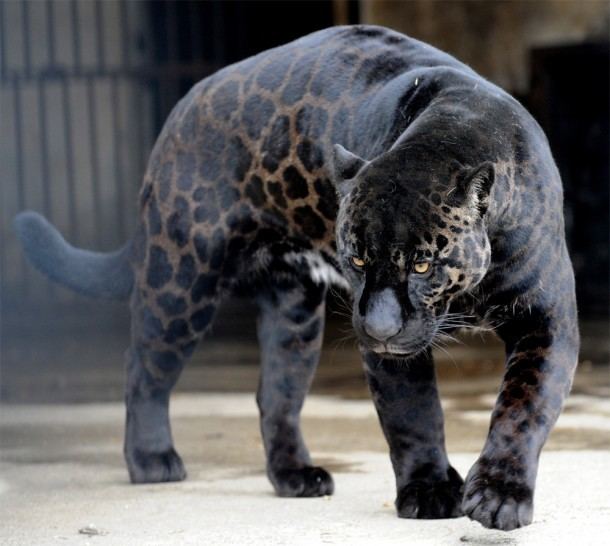 | ||
Speed Tiger: 49 – 65 km/h, Lion: 80 km/h, Leopard: 58 km/h Height Tiger: 70 – 120 cm, Lion: 1.2 m, Leopard: 45 – 80 cm, Jaguar: 63 – 76 cm Lower classifications Tiger, Lion, Leopard, Jaguar, snow leopard | ||
Panthera is a genus within the Felidae family that was named and first described by the German naturalist Oken in 1816. The British taxonomist Pocock revised the classification of this genus in 1916 as comprising the species lion, tiger, jaguar, and leopard on the basis of cranial features. Results of genetic analysis indicate that the snow leopard also belongs to the Panthera, a classification that was accepted by IUCN assessors in 2008.
Contents

Only the tiger, lion, leopard and jaguar have the anatomical structure that enables them to roar. The primary reason for this was formerly assumed to be the incomplete ossification of the hyoid bone. However, new studies show the ability to roar is due to other morphological features, especially of the larynx. The snow leopard does not roar. Although it has an incomplete ossification of the hyoid bone, it lacks the special morphology of the larynx.
Name
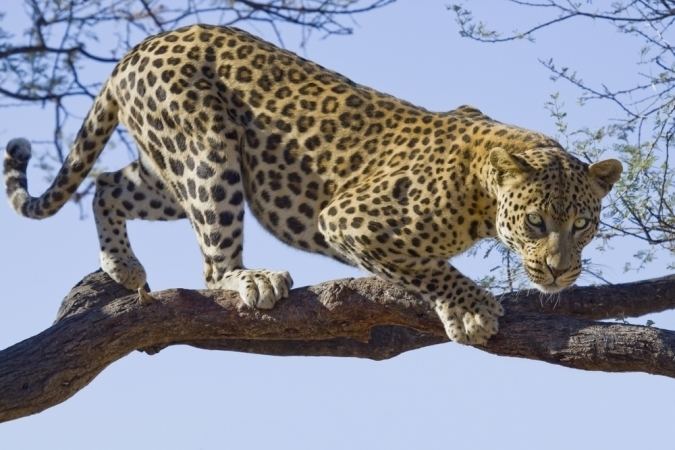
The word panther derives from classical Latin panthēra, itself from the ancient Greek Pánthēr (πάνθηρ). The Greek pan- (πάν), meaning "all", and thēr (θήρ), meaning "prey" bears the meaning of "predator of all animals". Use of the word for a beast originated in antiquity in the Orient, probably from India to Persia to Greece.
Characteristics
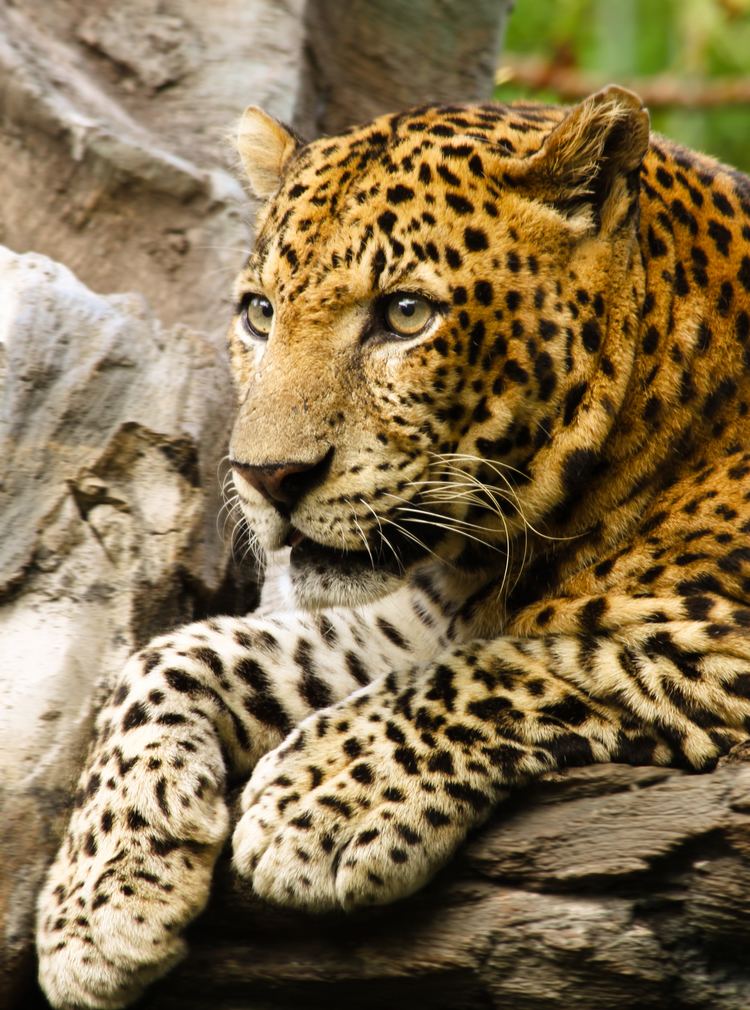
In Panthera species, the dorsal profile of the skull is flattish or evenly convex. The frontal interorbital area is not noticeably elevated, and the area behind the elevation is less steeply sloped. The basicranial axis is nearly horizontal. The inner chamber of the bullae is large - the outer small. The partition between them is close to the external auditory meatus. The convexly rounded chin is sloping. All Panthera species have an incompletely ossified hyoid bone and this along with a specially adapted larynx that has proportionally larger vocal folds that are covered in a large fibro-elastic pad, is what enables all Panthera species except snow leopard to roar.
Evolution
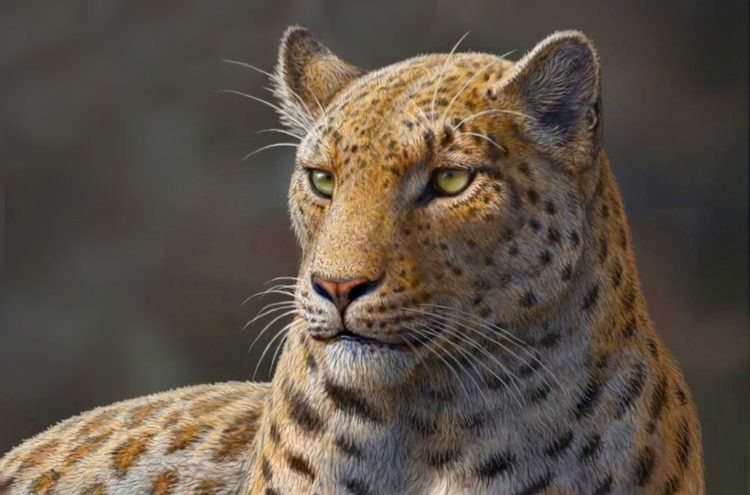
Panthera probably evolved in Asia, but the roots of the genus remain unclear. Genetic studies indicate that pantherine cats diverged from the subfamily Felinae between six and ten million years ago. fossil records that appear to belong within the Panthera genus reach only 2.0 to 3.8 million years back.
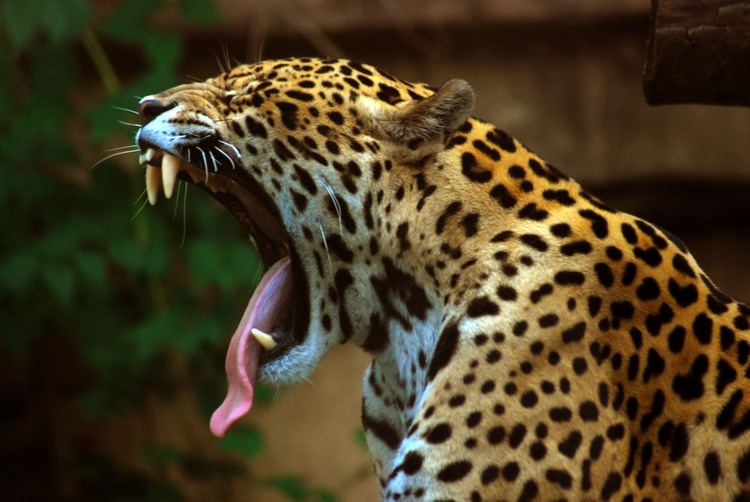
The snow leopard was initially seen at the base of Panthera, but newer molecular studies suggest that it is nestled within Panthera and is a sister species of the tiger. Many place the snow leopard within the genus Panthera, but there is currently no consensus as to whether the snow leopard should retain its own genus Uncia or be moved to Panthera uncia. Since 2008, the IUCN Red List lists it as Panthera uncia using Uncia uncia as a synonym.
The genus Neofelis is generally placed at the base of the Panthera group, but is not included in the genus itself.
Results of a mitogenomic study suggest the phylogeny can be represented as Neofelis nebulosa (Panthera tigris (Panthera onca (Panthera pardus, (Panthera leo, Panthera uncia)))). About 11.3 million years ago Panthera separated from other felid species and then evolved into the several species of the genus. N. nebulosa appears to have diverged about 8.66 million years ago, P. tigris about 6.55 million years ago, P. uncia about 4.63 million years ago and P. pardus about 4.35 million years ago. Mitochondrial sequence data from fossils suggest that the American lion (P. l. atrox) is a sister lineage to Upper Pleistocene Eurasian cave lion (P. l. spelaea) that diverged about 0.34 million years ago.
The prehistoric cat Panthera onca gombaszogensis, often called European jaguar is probably closely related to the modern jaguar. The earliest evidence of the species was obtained at Olivola in Italy, and dates 1.6 million years.
Classification
During the 19th and 20th centuries, various explorers and staff of natural history museums suggested numerous subspecies, or at times called races, for all Panthera species. The taxonomist Pocock reviewed skins and skulls in the zoological collection of the Natural History Museum, London and grouped subspecies described, thus shortening the lists considerably. Since the mid 1980s, several Panthera species became subject of genetic research, mostly using blood samples of captive individuals. Study results indicate that many of the lion and leopard subspecies are questionable because of insufficient genetic distinction between them. Subsequently, it was proposed to group all African leopard populations to P. p. pardus and retain eight subspecific names for Asian leopard populations.
Based on genetic research, it was suggested to group all living sub-Saharan lion populations into P. l. leo. More recent genetic research indicates that the Western and Central African lion populations form a different clade and are more related to the Asian lion than to lions from Southern or eastern Africa. These populations have been largely ignored in previous studies.
Black panthers do not form a distinct species, but are melanistic specimens of the genus, most often encountered in the leopard and jaguar.
Phylogeny
The cladogram below follows MazáK, Christiansen and Kitchener (2011).
Species
The genus Panthera comprises:
Taxonomic placing is uncertain for the extinct Fossil Panthera species:
